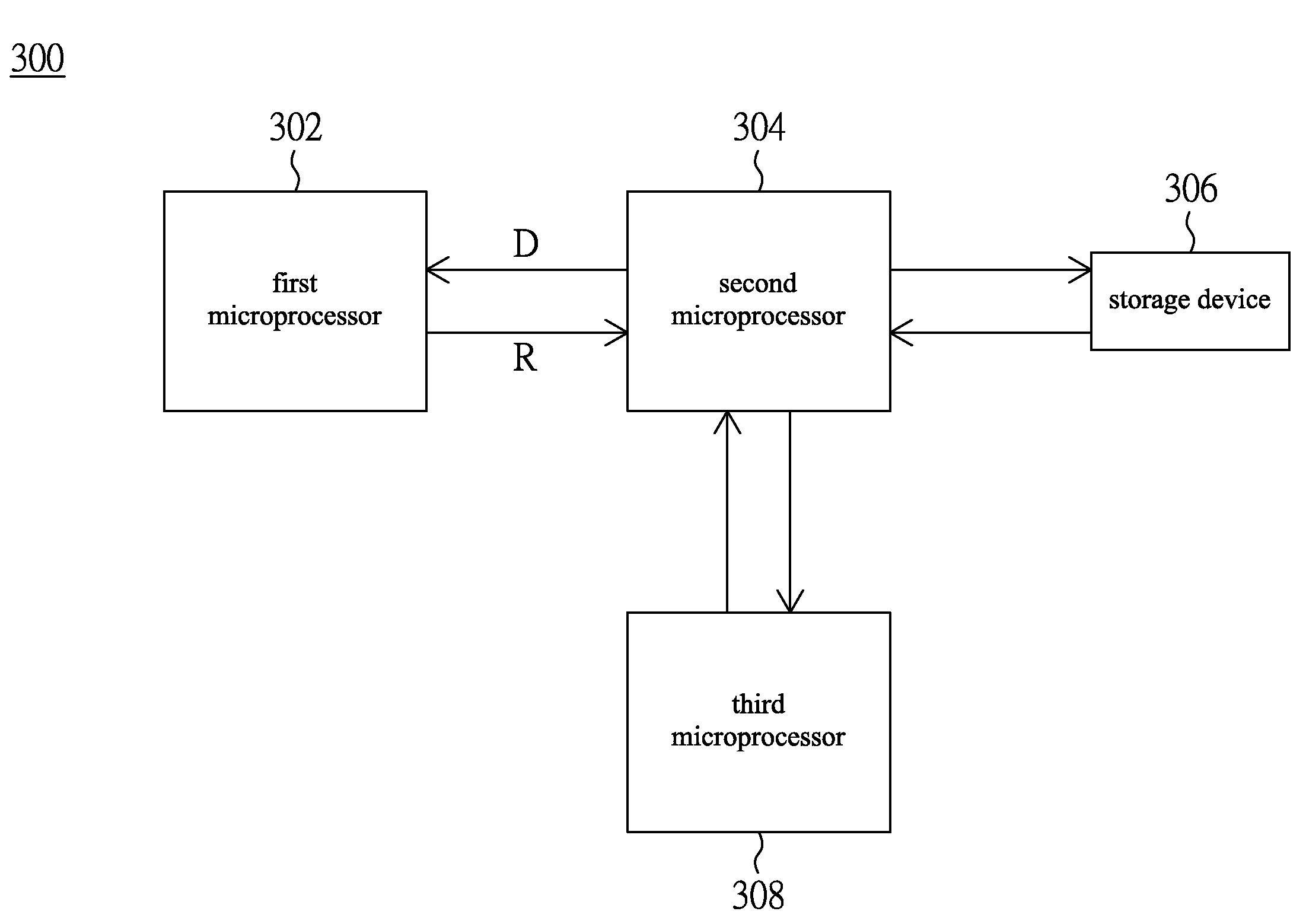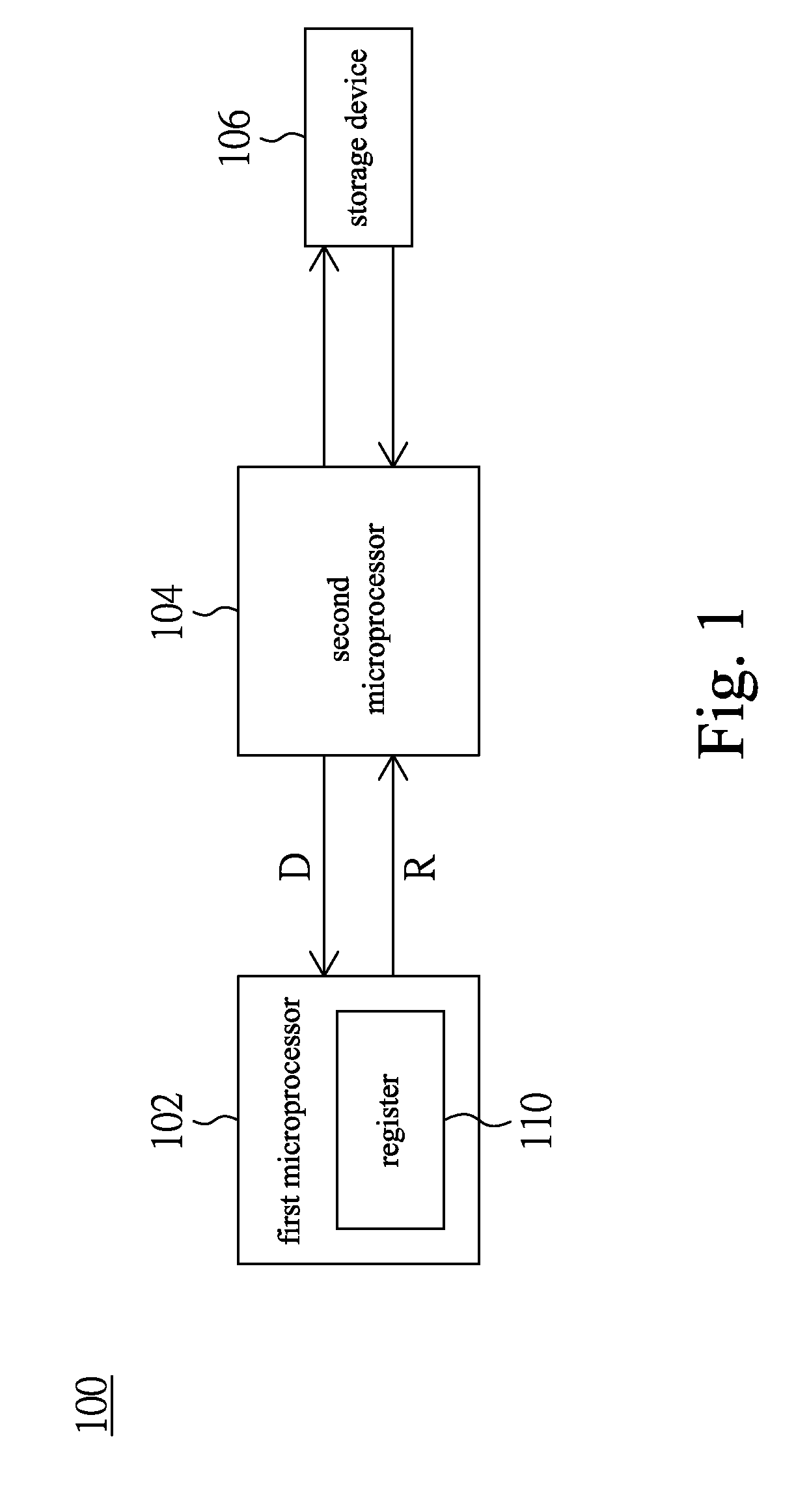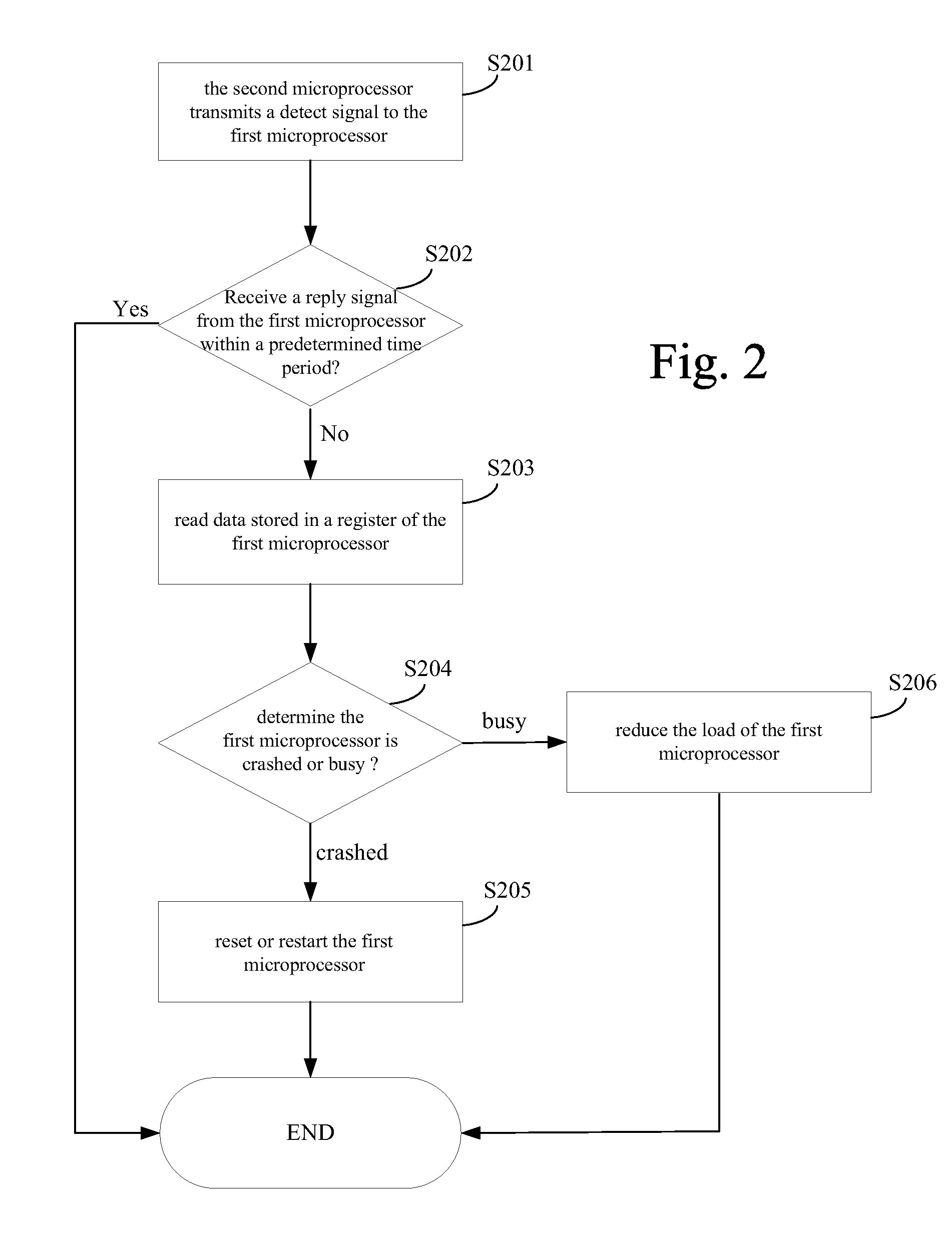Multi-Microprocessor System and Control Method for the Same
- Summary
- Abstract
- Description
- Claims
- Application Information
AI Technical Summary
Benefits of technology
Problems solved by technology
Method used
Image
Examples
first embodiment
[0013]Referring to FIG. 1 showing a block diagram of a multi-microprocessor system according to a first embodiment of the invention, a multi-microprocessor system 100 comprises a first microprocessor 102, a second microprocessor 104, and a storage device 106. The second microprocessor 104 is coupled to the first microprocessor 102, and is for monitoring the first microprocessor 102.
[0014]Please refer to FIG. 2. FIG. 2 shows a flow diagram of a control method of the multi-microprocessor system shown in FIG. 1. When monitoring the first microprocessor 102, the second microprocessor 104 transmits a detect signal D to the first microprocessor 102, as shown in step S201. Then, the second microprocessor 104 determines the state of the first microprocessor 102 according to whether it receives a reply signal R from the first microprocessor 102, as shown in step S202. In the event that the second microprocessor 104 does not receive the reply signal R from the first microprocessor 102 after t...
second embodiment
[0027]FIG. 3 shows a block diagram of a multi-microprocessor system according to a second embodiment of the invention. A multi-microprocessor system 300 comprises a first microprocessor 302, a second microprocessor 304, a third microprocessor 308, and a storage device 306. The second microprocessor 304 is coupled to the first microprocessor 302, and is for monitoring the first microprocessor 302.
[0028]A difference in the second embodiment from the first embodiment is that, in the event that the second microprocessor 304 determines the first microprocessor 304 is busy, the second microprocessor 304 transfers a share of task to be executed from the first microprocessor 302 to the third microprocessor 308, so as to reduce the load of the first microprocessor 302.
[0029]For example, the second microprocessor 304 controls the first microprocessor 302 to stop a share of task being performed by the first microprocessor 302. Via controls of the second microprocessor 304, the third microproce...
PUM
 Login to View More
Login to View More Abstract
Description
Claims
Application Information
 Login to View More
Login to View More - R&D
- Intellectual Property
- Life Sciences
- Materials
- Tech Scout
- Unparalleled Data Quality
- Higher Quality Content
- 60% Fewer Hallucinations
Browse by: Latest US Patents, China's latest patents, Technical Efficacy Thesaurus, Application Domain, Technology Topic, Popular Technical Reports.
© 2025 PatSnap. All rights reserved.Legal|Privacy policy|Modern Slavery Act Transparency Statement|Sitemap|About US| Contact US: help@patsnap.com



